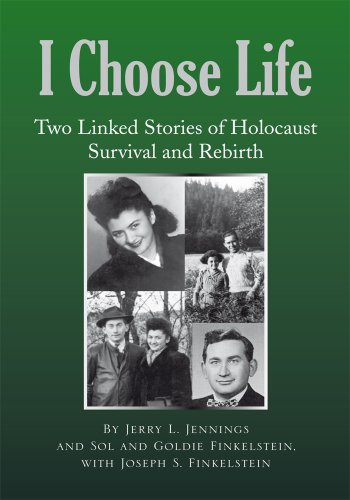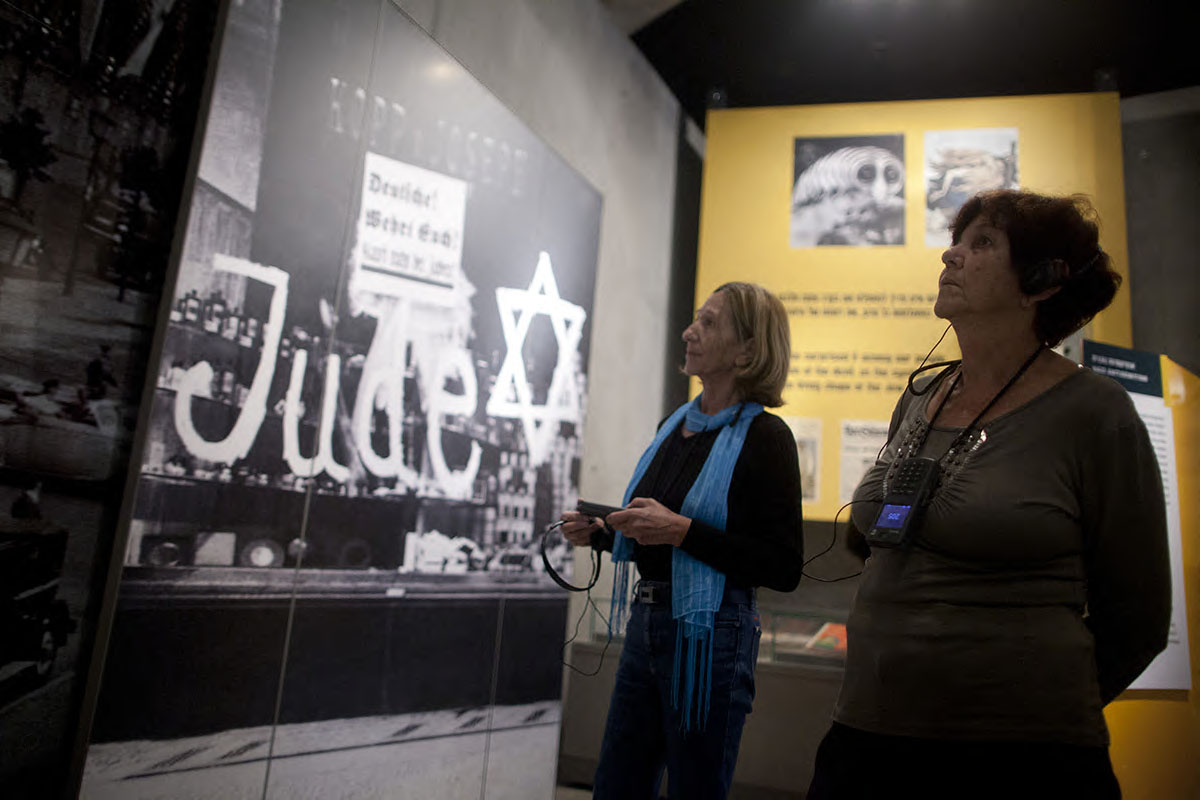
I Choose Life: Two Linked Stories of Holocaust Survival and Rebirth
Sunday to Thursday: 09:00-17:00
Fridays and Holiday eves: 09:00-14:00
Yad Vashem is closed on Saturdays and all Jewish Holidays.
Entrance to the Holocaust History Museum is not permitted for children under the age of 10. Babies in strollers or carriers will not be permitted to enter.

I Choose Life: Two Linked Stories of Holocaust Survival and Rebirth
I Choose Life: Two Linked Stories of Holocaust Survival and Rebirth
Jerry L. Jennings, Sol and Goldie Finkelstein
Xlibris, 2009
139 pages
This well-written book tells the stories of Sol Finkelstein and Goldie Cukier Finkelstein, two Holocaust survivors who met after the war and married. Their son Joseph Finkelstein made it a point to record his parent’s Holocaust stories so that they would not be forgotten, and this book is a testament to them and the legacy they created. Told in the first person perspective, the stories of Sol and Goldie are initially told separately, and then their stories intertwine and the reader learns of life after the war and the ways in which some survivors rebuilt their lives and were eternally grateful for their survival.
The reader begins by hearing the voice of a child as Sol remembers his childhood in Eastern Europe before the Holocaust, first in Pulawy where he was born, and later in Radom, Poland. The youngest of 5 children, Sol attended cheder, spent Shabbat with his religiously observant family, and had his Bar Mitzvah in the fall of 1938. He fondly recalls his life in Radom, though even as a child, remembers the anxiety that built as war neared.
Sol’s portrayal of his horrific experiences during the war, seem as real to him now as when he lived through them, and the reader can almost hear the very words of his testimony. His testimony details the traumatic and horrifying events that he experienced in the Radom ghetto, Auschwitz, on a death march to Mauthausen, in the sub-camp Hinterbruhl, and finally being liberated from Mauthausen. He survived alongside his brother Joe, a result of acts of God as well as physically saving each other’s lives.
Sol and Joe had been with their father until he was taken on a death march from Mauthausen. After the war, the brothers learned that their father in fact survived the war and died in a hospital from typhus a few days after liberation. They are reunited with their mother and sister, travel to a DP camp in Germany, and hope to make their way to Palestine.
Along with the many young people in the DP camp is a woman named Goldie Cukier, who Sol courts and proposes to, excited to begin a new life. From there, the book goes back in time to hear Goldie’s story.
Goldie Cukier was born in Haifa in pre-state Israel in 1929, but her family returned to their hometown of Sosnowiec, Poland to be close to family. As a ten-year-old child, Goldie recalls the Nazi invasion of her beloved town, the burning down of the Great Synagogue, the barring of her father from operating his own warehouse. In 1942, Goldie’s family was one of the lucky ones not to be separated or selected for deportation.
Goldie’s family lived together as a family while she and her sister worked for the Germans, in an effort to remain alive and safe from deportation. One day, both Goldie and her sister Toby were grabbed off the street in a random raid, and Goldie’s father had to make the terrible decision about which daughter to leave with the Nazis and which to bring home (after appealing to the Judenrat).
Goldie, left without family, was sent to the female work camp Graeben, one of the subcamps of Gross-Rosen concentration camp. Nearly two years later, after enduring two winters in the camp and very little food and clothing, Graeben concentration camp was evacuated and the inmates were taken on a death march. Eventually transported to Bergen Belsen concentration camp, Goldie worked cleaning the quarters of the Nazi camp guards. She never wanted to accept help from others.
In April 1945, British tanks liberated the prisoners of Bergen-Belsen. Goldie, who was terribly sick with typhus, was saved by a Jewish doctor who had been a good friend of Goldie’s mother. In a Displaced Persons Camp after the war, Goldie made new friends and began her new life. Her family, she discovered, had been deported to Auschwitz and she remained with an adopted family as they moved around in search of other surviving relatives.
It was in Stuttgart that Goldie met Sol Finkelstein. He pursued her and asked her to marry him. She agreed and they moved one year later with Sol’s family to America. Sol and Goldie have three children and several grandchildren. They feel blessed with their legacy.
This story is told in a sweet manner, perfect for middle school and high school students to read. Teachers may want to choose specific sections that they feel are most fitting to their students, but this testimony provides a good background in prewar life as well as life after the Holocaust, in addition to the horrific experience of the ghettos and camps. It is touching and a good alternative to a video testimony for use in the classroom.

Thank you for registering to receive information from Yad Vashem.
You will receive periodic updates regarding recent events, publications and new initiatives.

"The work of Yad Vashem is critical and necessary to remind the world of the consequences of hate"
Paul Daly
#GivingTuesday
Donate to Educate Against Hate


Worldwide antisemitism is on the rise.
At Yad Vashem, we strive to make the world a better place by combating antisemitism through teacher training, international lectures and workshops and online courses.
We need you to partner with us in this vital mission to #EducateAgainstHate
The good news:
The Yad Vashem website had recently undergone a major upgrade!
The less good news:
The page you are looking for has apparently been moved.
We are therefore redirecting you to what we hope will be a useful landing page.
For any questions/clarifications/problems, please contact: webmaster@yadvashem.org.il
Press the X button to continue



